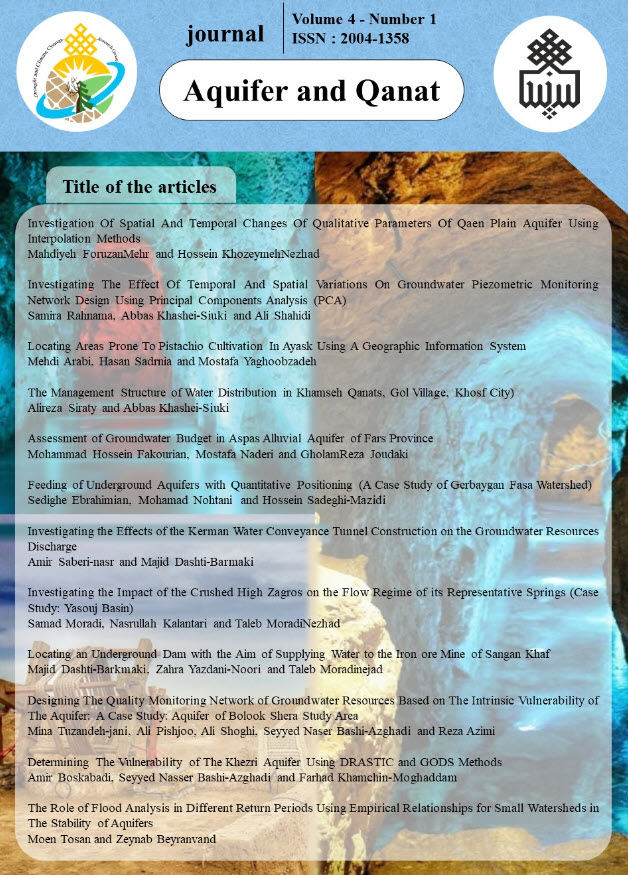Document Type : Original Article
Authors
1 Fasa University, Fasa, Iran
2 fasa univercity
Abstract
In the last three decades, drilling a large number of authorized and unauthorized wells has reduced the groundwater level in many aquifers of Iran. In order to improve these conditions, the utilization of groundwater resources should be controlled by considering the appropriate capture zones between wells and qanats. Therefore, a capture zone is considered for each well in operation. In this study, using empirical relationships (Zishard, Comfort, and DuPuit), calculated fixed radius method, and hydraulic equations, computer computational models were presented and the capture zone of 4 wells with three flows of 8, 11, and 16 L/s was investigated and calculated in Kavar county (Fars Province). The capture zones calculated by the DuPuit relationship for wells 1 to 4 were 6.16, 5.10, 7.14, and 5.01 m, respectively, which were very small and far from reality. The results showed that Zishard, Comfort, and CFR methods were superior to the DuPuit relationship. Factors affecting the well capture zone were also examined. Since well discharge rate, hydraulic conductivity, pumping time, and transmissivity are directly related to capture zone, with increasing these factors, capture zone also increased. However, unlike the previous factors, the storage coefficient has an inverse relationship with the capture zone and with increasing the amount of storage coefficient, the capture zone decreased. In general, according to the obtained results, if there are reliable parameters for the well location, this computer model can be used as a useful tool to determine the capture zone.
Keywords

